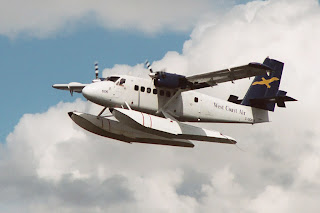
The Cessna T-37 Tweet[1] (designated Model 318 by Cessna[2]) is a small, economical twin-engine jet trainer-attack type aircraft which flew for decades as a primary trainer for the United States Air Force (USAF) and in the air forces of several other nations. The A-37 Dragonfly variant served in the light attack role during the Vietnam War and continues to serve in the air forces of several South American nations.
The T-37 served as the U.S. Air Force's primary pilot training vehicle for over 52 years after its first flight. After completing Primary in the Tweet, students moved on to other advanced Navy, Marine Corps or Allied trainers. 1,269 Cessna T-37s were built, with 419 still serving in the United States Air Force in 2006. Between 2001 and 31 July 2009 the USAF phased out the T-37 in favor of the T-6 Texan II.[3]















